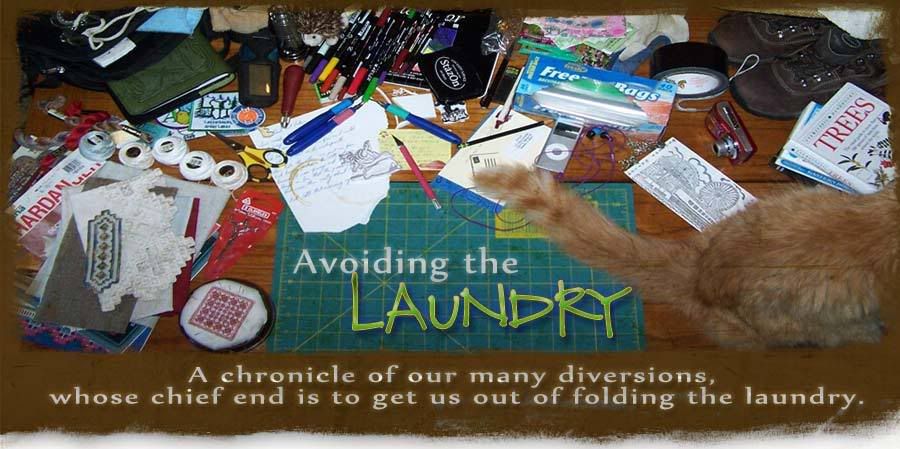From the moment that I first saw the pattern for this doily, I wanted to make it. That was more than a decade ago. The French term "piece de resistance" literally means "piece of resistance". It represents the best part of something, or something which resists the normal conventions of comparable items. Not only is this piece my best effort to date, it also resisted me every step of the way.
When I purchased the book of charts, I had quite a number of pieces behind me and was long finished with lessons. But those four Edelweiss flowers were a perplexity. So I called up my Hardanger teacher, but she had never tackled them before either. Fine. I struggled, but I managed to figure it out myself. The first one that was acceptable took an hour and measured less than an inch square.
That nifty Danish Picot Buttonhole stitch was another story. Several people that I talked to said something like "Oh, I haven't quite gotten to that level yet." Gulp. I'll make it short and just tell you that it took a phone call to Nordic Needle in Fargo before it became clear. It is very delicate and adds a great deal to otherwise straight lines, but it was also costly in time management.
The Triple Cable stitch, thankfully, covers a lot of space quickly--provided that you keep your mind on your counting. Satin stitching is also fast. The Maltese Cross filler stitch...not so much. I learned several new (apparently very advanced) stitches and the whole thing only took 29 hours.
Then, while I was cutting the completed piece out, I nicked the buttonhole stitch. If you know anything about stitching, you'll know this was a fatal mistake. Buttonhole stitching keeps the fabric from unraveling and the fabric holds the buttonhole stitches in place. You cannot have one without the other. Imagine trying to tie your shoelaces with the top half of the eyelets missing. I was devastated. But I couldn't scrap the piece. It took me a long time, but I managed to carefully pull the clipped thread and rework a new one.
A trained eye might be able to find the flaw, but it would have to be looking pretty close. However, I think the doily will always be fragile in that spot, so I would never want to wash it. I framed it instead. Ta-Da!
The piece is worked with white Perle Cotton thread over a very soft, 28 count Lugana in pale sage. It looks fantastic in my kitchen.
I'm pretty sure it's an indication of some type of syndrome, but I've already started another one to enter in the county fair.



